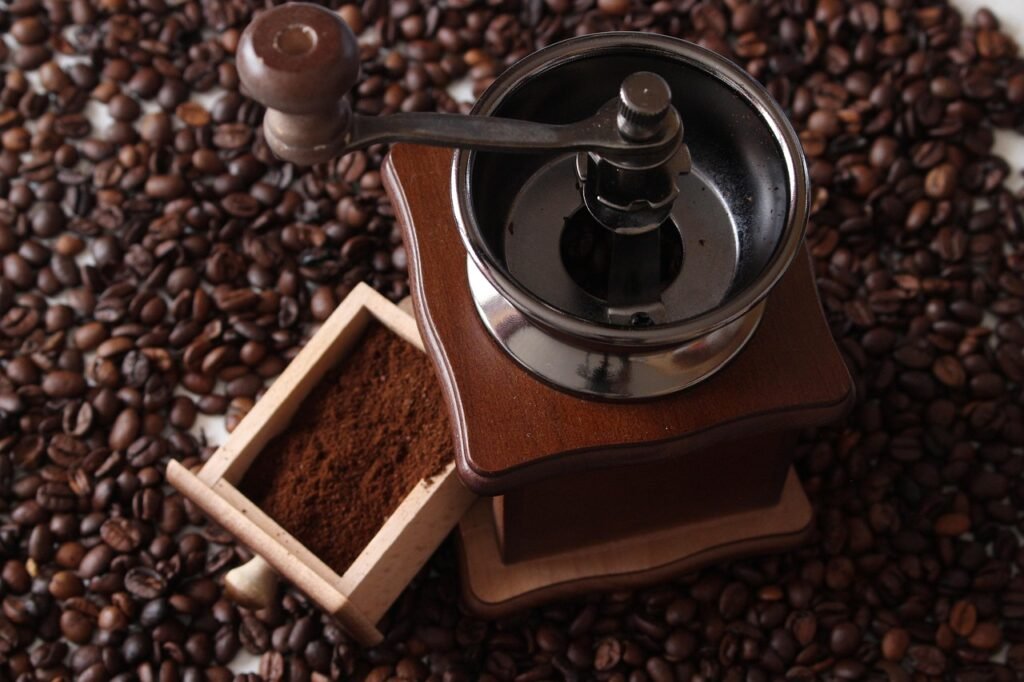
Artisanal Rituals for a Memorable Customer Experience
How can brands create a more balanced and memorable customer experience by blending artisanal product quality with thoughtful everyday rituals that keep people coming back?

Is your espresso falling short of that rich, full-bodied flavor you crave? Perfecting espresso starts with understanding the key role roasting plays. Roasting isn’t just about turning green coffee beans dark; it’s a precise art that shapes the depth and complexity of your espresso shot. Dive into the unique approach of roasting coffee for espresso and explore how specialized profiles can elevate your daily brew.
Coffee beans start green, moist, and earthy. Roasting transforms them into the flavorful beans used for espresso by applying heat, which turns them brown and enhances their aroma.
Espresso’s concentrated nature heavily influences its roast profile. It is brewed under high pressure with a short extraction time. This process demands a roast profile that maximizes flavor and solubility, allowing for quick and efficient extraction. This avoids underdevelopment or over-extraction.
Creating specific roast profiles while roasting coffee for espresso is key. Each profile brings out unique characteristics, such as acidity, sweetness, or bitterness. A well-crafted profile ensures balanced and rich flavor, catering to taste preferences. Careful control during roasting, from drying to browning to development, achieves the perfect roast for espresso.

There is no universal definition for espresso versus filter coffee roasting levels. Some roasters may have “filter” roasts that are darker than others’ “espresso” roasts. This varies across roasters and regions.
Key characteristics of various roast levels:
Roast levels affect both flavor profile and solubility. Light roasts may need finer grinding and precise brewing due to higher acidity and complexity. Dark roasts, being more soluble, extract quickly and consistently, and are more forgiving in the brewing process.
Key factors in roasting coffee for espresso include grind size, water temperature, and roast profile. Controlling these elements results in a well-balanced espresso shot.
Espresso roasting involves three phases: drying, browning, and development.
In the drying phase, beans lose moisture and yellow, preparing for browning and development. During browning, the Maillard reaction turns them brown, developing complex flavors. Finally, in the development phase, beans reach the desired roast level with fully developed flavors.
Managing heat and avoiding defects like tipping (burnt tips) and scorching (burnt spots) are vital. Gradually increase temperature for even roasting, and monitor airflow to prevent scorching.

Home roasting methods include ovens, skillets, heat guns, or barbecues, allowing beginners to experiment without big investments.
Recommended tools for home use:
Roast level and bean origin shape espresso’s flavor profile. Light roasts highlight a coffee’s acidity and fruitiness; dark roasts emphasize roasted notes like chocolate and caramel. Bean origin introduces distinct flavors, with African beans often providing floral or citrus notes, while South American beans offer nuttier tones.
Single-origin coffees boast unique flavors from their growing regions, ideal for those seeking specific tastes. Blends mix beans from different origins for a harmonious flavor balance that can be consistently reproduced.
Cupping and tasting are essential for identifying optimal flavor profiles in espresso roasts. Roasters use these methods to distinguish differences in acidity, sweetness, and body, ensuring the desired espresso experience. Regular cupping allows roast profile adjustments, maximizing the coffee’s inherent qualities.

To keep roasted espresso beans fresh, store them away from oxygen, moisture, heat, and sunlight. Utilize containers with one-way valves or vacuum-sealed bags to prevent air exposure, preserving essential oils and aromas for a rich espresso flavor.
Freezing can extend the beans’ freshness, provided they are sealed properly. Store beans in airtight containers or vacuum-sealed bags to avoid moisture and freezer burn. With correct freezing, you can maintain flavor quality even after a long storage period.
Roasting coffee for espresso is a complex yet rewarding process.
From transforming green beans to developing specific roast profiles, it demands precision and care. Different roast levels impact flavor and extraction, making each cup unique.
Applying proper roasting techniques ensures high-quality espresso, and choosing the right home roasting equipment can elevate your experience. Understanding flavor notes and maintaining bean freshness are crucial for consistent, delightful espresso.
Espresso benefits from dark or medium-dark roasts that provide a robust, full-bodied flavor. These roasts are developed for solubility and extraction quality required by espresso’s concentrated nature.
Roasting durations vary, but typically it takes 12-15 minutes to reach a dark roast suitable for espresso, depending on roasting equipment and desired flavor profile.
Espresso is not limited to dark roasts, though dark roasts are common due to their solubility and robust flavor. Medium roasts can also work well for espresso.
Yes, light roast coffee can be used for espresso, offering bright, complex flavors. However, it may be more challenging to extract properly due to its lower solubility compared to darker roasts.
Roasting temperatures for espresso typically range from 420°F to 460°F. Precise temperature control ensures proper development and avoids scorching or tipping the beans.
Both medium and dark roasts can be used for espresso. Medium roasts offer balanced acidity and sweetness, while dark roasts provide a fuller, more robust flavor.
Yes, espresso roast beans can be used with an Aeropress, providing a strong, rich flavor. Adjust the grind size and brewing time to balance the intense taste.
High-quality Arabica beans are preferred for roasting espresso due to their complex flavor profiles. Blends of Arabica with some Robusta can add crema and body.

How can brands create a more balanced and memorable customer experience by blending artisanal product quality with thoughtful everyday rituals that keep people coming back?

Independent coffee shops have always been about more than caffeine—they’re hubs of creativity, connection, and care. As café culture continues to evolve, new trends are

Introduction Independent cafes win when they feel like the neighborhood’s living room and operate with the discipline of a great kitchen. Below is a quick

Discover how top specialty coffee brands create lasting loyalty through storytelling, sourcing, and community connection. Real tips from 6 industry experts.

Discover the ultimate showdown between two beloved coffee brewing methods: the French press and Chemex. Explore how each technique caters to distinct palates, with the French press delivering bold flavors and the Chemex presenting a bright, clean taste.

Unlock the secrets to brewing the perfect cup of coffee with our comprehensive guide on using a coffee scale. Discover how precise measurements enhance flavor and consistency while eliminating bitterness.

Discover how water temperature plays a vital role in brewing the perfect cup of coffee. This article delves into the ideal temperature range of 195°F to 205°F for optimal flavor extraction, enhancing the enjoyment of high-quality beans.

Discover the world of curated specialty coffee bundles, perfect for enthusiasts seeking quality and craftsmanship. This article explores the benefits of ethically sourced, small-batch beans from brands like Equipoise Coffee, offering diverse flavor profiles that elevate your brewing experience.

Discover the art of manual brewing to elevate your coffee experience! This article explores various techniques like pour-over, French press, and AeroPress, revealing how they enhance flavor and your connection to every cup.